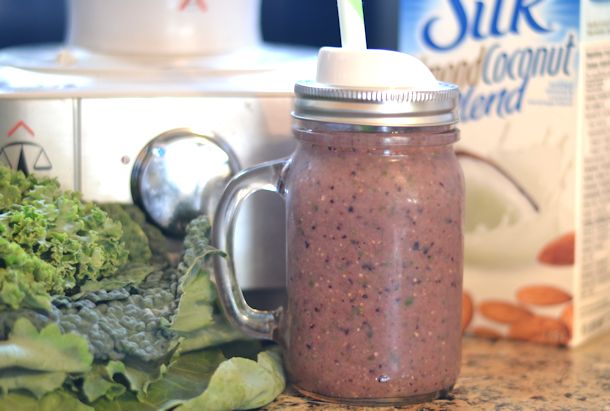I’ve dealt with the annoyance of mild to moderate seasonal allergies since I was a teenager. Nothing puts a damper on a nice spring day more than coughing, sneezing and stuffiness!
I’ve found plenty of ways to minimize and relieve my symptoms over the years, but did you know that changing your diet can actually help improve allergy symptoms?
Whether you are dealing with seasonal allergies, are prone to sinus infections, or are looking to stave off other respiratory issues, making adjustments to your diet could help.
Your sinuses and lungs, like any other part of your body, require the right nutrients to function at their best. Try these dietary changes as an easy way to help boost your respiratory well-being!
1. Season your food with more ginger and turmeric.
There are a couple of seasonings which can enhance respiratory health. One of the most popular of these is ginger.
Not only does ginger contain antioxidants and reduce inflammation, but studies show that it may even help fight lung cancer.
Along with using ginger to season your dishes, you also try peeling and eating chunks of fresh ginger. Be careful; it’s spicy!
Turmeric is a second spice to think about adding to more of your recipes. The anti-inflammatory powers of the curcumin in turmeric is well-known, so it can be a good option for those who suffer from inflammatory respiratory conditions.
You need a pretty high concentration of turmeric curcumin to have an effect, though. For that reason, you should consider taking it in supplement form as well as adding it to dishes.
2. Take a supplement containing anti-inflammatory herbs for respiratory support.
Speaking of supplements, did you know there are a number of different herbs which can enhance respiratory health?
The anti-inflammatory components of boswellia may be useful in counteracting a wide variety of inflammatory conditions, including bronchial asthma.
You can also consider the herb butterbur. In research studies, butterbur has been found to be around as effective as the antihistamine cetirizine. As an added bonus, butterbur doesn’t produce the unwanted sedative effects of an antihistamine medication.
Also consider trying quercetin, a flavonol which is found in kale, red onions, and a variety of other foods.
This flavonol helps to prevent the release of release of tryptase, MCP-1 and IL-6, which has been shown to help seasonal allergy sufferers.
Looking for an easy way to get more of these nutrients in your diet? Consider taking the highly-rated BREATHE Sinus & Lungs Support Supplement by Eu Natural.
This supplement includes quercetin, boswellia, butterbur, nettle, Coleus Forskohlii, and other healthy herbal ingredients, together with a hefty dose of vitamin D, another nutrient which may help to stave off respiratory woes.
Additionally, Eu Natural’s supplement does not contain the binders, fillers, and additives which are common in so many other respiratory supplements.
3. Eat more fruit.
If you do not get a lot of fruit in your diet, consider upping your intake so that you can get even more healthy flavonoids…along with vitamin C, vitamin E, and beta carotene!
Some fruits that are particularly good for respiratory health include apples, pumpkins, and berries. And don’t forget those tomatoes, which contain an anti-inflammatory compound called lycopene.
4. Up your veggies.
You may remember that I mentioned that kale is a good source of quercetin. As a cruciferous vegetable, kale also provides you with a ton of other great nutrients for respiratory health, like chlorophyll (which helps support blood flow to the lungs).
Along with kale, think about eating more cruciferous vegetables such as cauliflower, broccoli, collard greens, and cabbage. You’ll give your body a serious dose of antioxidants every time you do.
5. Boost your omega-3 fatty acid intake.
When it comes to reducing inflammation, one of the best moves you can make is to reduce omega-6 fatty acids in your diet while increasing omega-3 fatty acids. Most westerners do not have a balanced diet with respect to these fatty acids.
If your ratio is in favor of omega-6 fatty acids right now, you have an inflammatory diet. But if you shift the ratio so that it is in favor of omega-3 fatty acids, you will be eating a more anti-inflammatory diet.
How can you do that? For one thing, you can try eating more fish like salmon. Fish are an excellent source of omega-3 fatty acids. Fish oil supplements also are an option.
If you do not eat fish, you can try adding flax seed to your meals or using a flax seed supplement. Flax is a great vegetarian alternative source of omega-3 fatty acids.
6. Eat more beans.
Beans are another fantastic food to increase in your diet for better respiratory health. Beans are rich in magnesium, which can help relax your muscles and open your airway.
Meanwhile, the antioxidants in beans can help to curb inflammation, further increasing respiratory well-being.
From herbs and spices to fruits and vegetables, the right diet can make a big difference both in your respiratory health and your overall energy. Of course, it can be hard sometimes to ensure you’re eating as much of those healthy foods as you should be!
If you want to ensure maximum lung health, consider adding a herbal supplement to your diet that contains boswellia, butterbur, and other nutrients for respiratory health. It’s a great little extra boost for your body…especially when paired with these great anti-inflammatory and lung-supporting foods!





Walk, gut breathe, laugh and eat your veggies. Stop juicing and absorb the entire fruit/veggie. Imagine the day fruits and veggies are not easily accessible. thanks a lot for the article great stuff.
I suffer from seasonal allergies aso. Thanks for the tips !
Thank you for these tips. I think that beans increases your rate of metabolism. If that is the case, will it not affect breathing otherwise?
I’m upping my veggies definitely